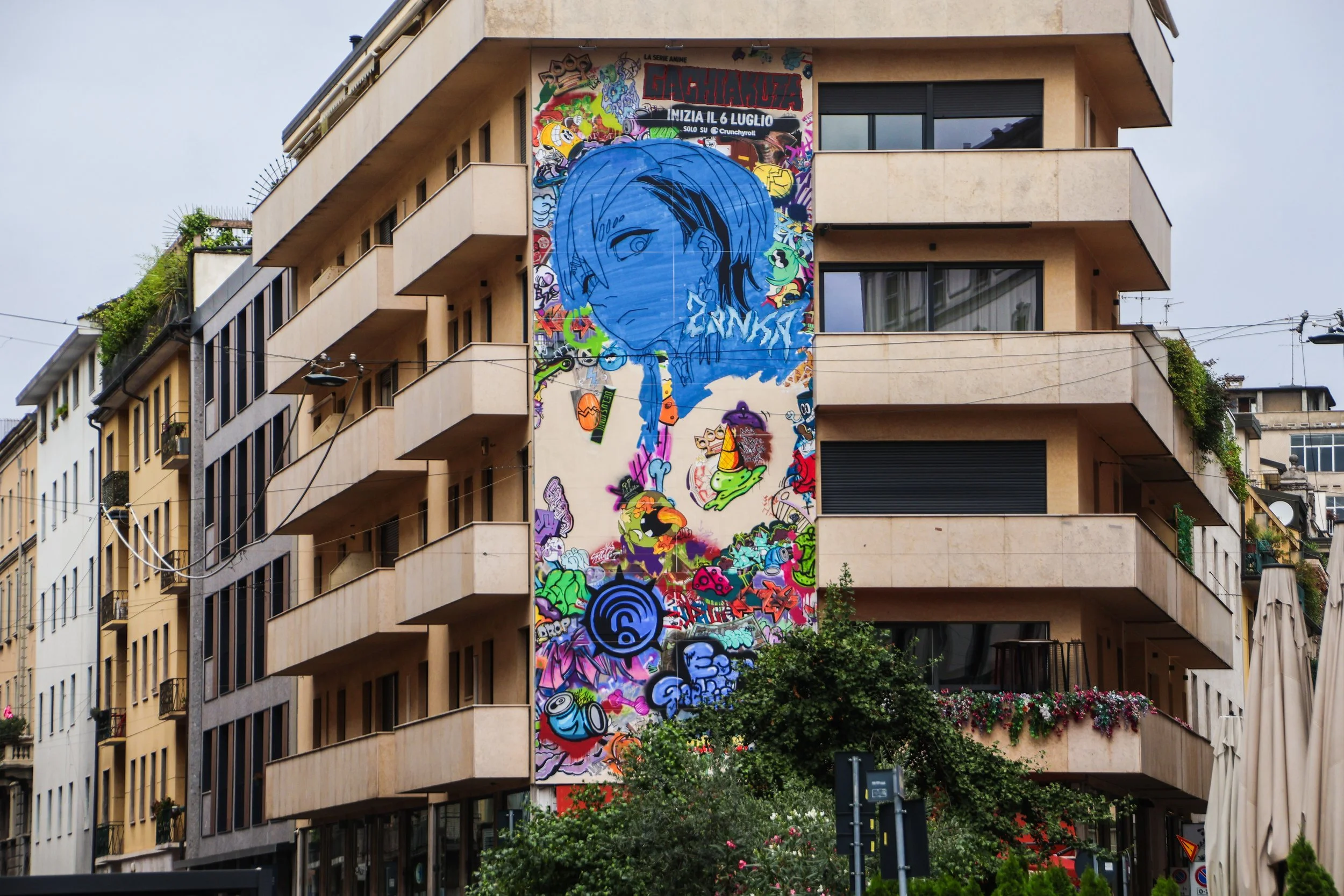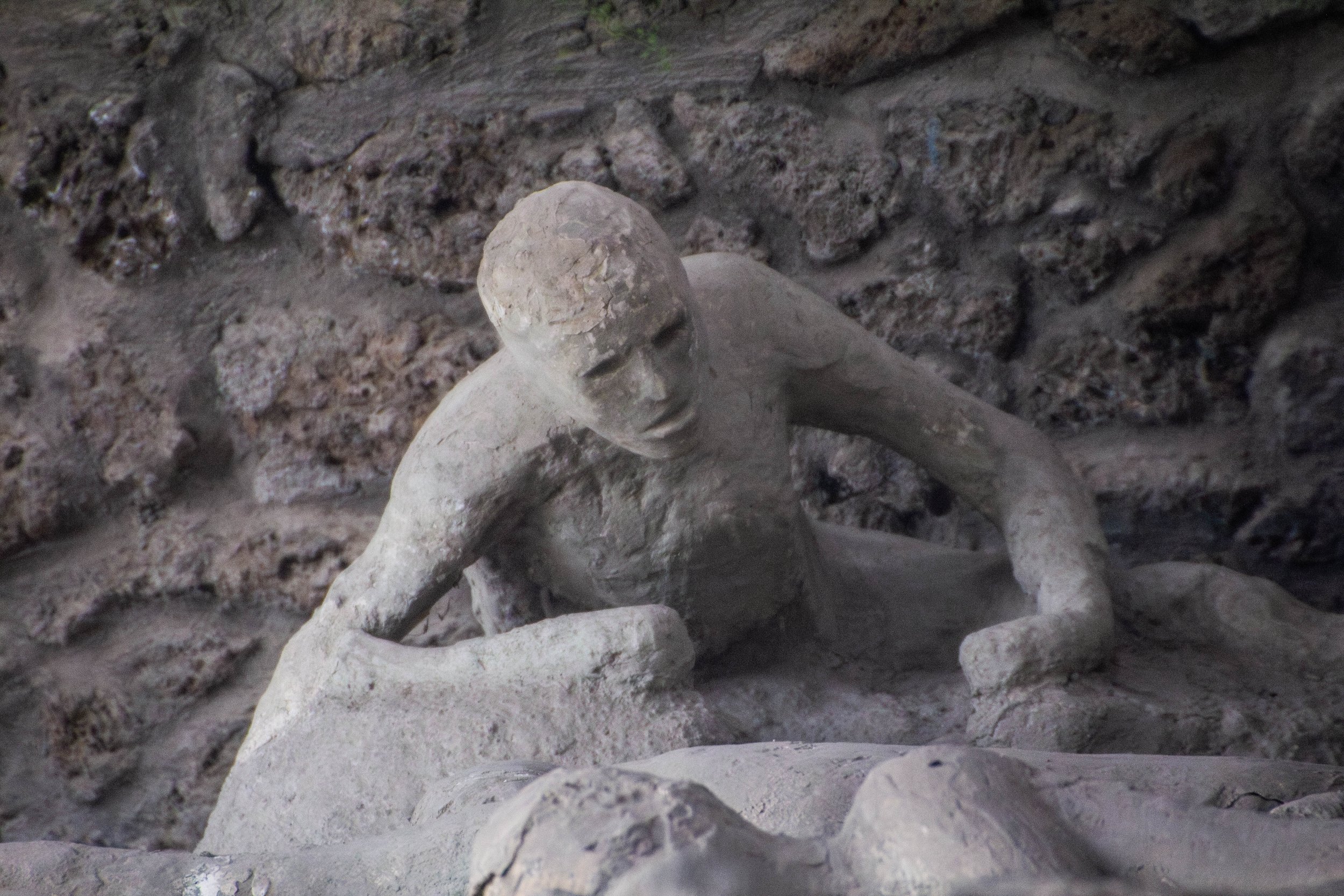And we’re closing our time in Milano with a street art feature! On this trip I did not find nearly the quantity that I have in some of the other articles on street art, but the quality of what I did find was high enough that I decided these murals deserved their own space. That being said, the mural map of Milan that I found on streetartcities.com suggests I may have missed some really good ones along the way, but that’s okay. I’ll be back!
Viewing entries in
Italy
During my first visit to Milan, I had the great privilege of locals taking me under their wing, which is always a game-changer when exploring a new place. Dropping into communities that already exist and riding the coattails of their intuitive understanding of their home really gives you a feel for what life in a place is really like—but it also relieves you of having to think about where exactly you are in the city at any given moment. As a result, you’ll walk away with a strong emotional bond to a city, but not much concrete information about it. That was my challenge in returning to Milan. So I did the legwork of sifting through exactly where I was during my first visit to Milan, and came up withe two neighborhoods that made the biggest impression on me. They were Brera and Navigli. Let’s jump in.
Milan (or, in Italian, Milano) is not a city that is known for its beauty—at least not within Italy. But I never thought this was fair. Yes, Milan prioritizes function over form, and is more of an industrial hub than any other city in Italy… but the rest of Italy sets an extremely high bar for what it means to be a ~beautiful city. In most other countries, this would be considered an absolutely gorgeous city, but when you’re competing with Rome, Florence, and Venice… yeah, it’s going to be a losing battle. But comparison is the thief of joy, and Milan is still quite beautiful in its own rite! More to the point; it will give you a better window into what everyday life looks like for Italians much better than Venice or Florence ever could. This is real life, and—to me—real life in Milan looks pretty damn good.
Duomo di Milano is arguably the center piece of Milan, and the plaza bearing its name—Piazza del Duomo—sits at the center of “Central Milan”. We’ll branch out to other parts of the city in forthcoming articles, but today, we’re only going to focus on the comings and goings of this little area.
The Greeks really started to invest in and expand Pompeii around 450 BC, but a couple of centuries later, it would ultimately pass into the control of the Roman Empire. By the year 78 AD, it was a large, affluent, well-to-do town in the Roman Empire, which was already more than 3x older than the modern-day United States.
Oh yeah, and it also sat right next to a giant volcano called Mount Vesuvius.
In 79 AD, Vesuvius erupted, releasing approximately 100,000x the energy of the atomics bombs that were dropped on Hiroshima and Nagasaki during WWII COMBINED. At this point in history, the Bay of Naples was already a densely populated area, which made this one of the deadliest eruptions in history. Pompeii, as well as a few other towns in the area, such as Herculaneum, were pretty much wiped off the map, their inhabitants burned and/or suffocated by the violent pyroclastic flows.
Naples takes its calcio (football a.k.a. soccer) seriously. Support for Napoli is almost a religious belief here, and the fact that images of Maradona (the most famous Napoli player ever) outnumber images of Jesus in the streets of Naples can serve as proof of that. But it’s not just Maradona; there are images of the Napoli logo and Napoli players everywhere around Naples.
We’re back with another article set in urban Naples, AND the 2nd-ever showcase of Italian street art! The first took place in Sicily a few years ago, but Naples absolutely crushed Sicily in terms of street art.
Being in beautiful old cities—like those found in Italy—often means less murals. This is because these cities are dense, beautiful, and well-kept—so there’s no empty surfaces for street art. As such, I haven’t yet seen much street art in Northern Italy. However, Southern Italy—being the poorer half of the country—provides a bit more empty space for murals. And Napoli’s unique blend of rich culture and poor economics creates the perfect conditions for Italy the flex its artistic muscles in grittier and more contemporary ways.
Off the Sorrento Peninsula, in the Bay of Naples and the Tyrrhenian Sea, sits the tiny, beautiful island of Capri It may seem like the conversion of places into ~tourist destinations~ is something of a recent phenomenon—like in the last 70 years or so—but there are some places in this world that have attracted tourists for much, MUCH longer.
Capri is one of those places.
In fact, it was functioning as a vacation destination as far back as the ROMAN EMPIRE, likely before the birth of Christ. We actually don’t even know the origin of the name “Capri.” This idyllic isle just is. It’s eternal; immortal. And it’s also one of the rare places in the world where tourism cannot possibly cheapen the destination; it IS the destination.
Naples is the capital of the Italian region of Campania and the 3rd largest city in Italy in terms of population, behind only Roma and Milan. Naples proper has a population of ~909,000 people, and a metro area population of ~3.1 million people, although that figure has been on the decline in recent years. However, the UN projects that starting this year the population is expected to enter a new period of growth. So, the punchline is, Naples is a big city. Especially in the context of Italy. Honestly, I would have guessed that the population would be more than this. It feels quite overwhelming when you’re in the middle of it.
Are you a "glass half full" or a "glass half empty" kind of person?
I think that your opinion on Sicily will pretty much answer that question for you. I like to think of myself as somebody who is able to look on the bright side of things, and to me, Sicily was beautiful. However, it was definitely also quite gritty. Today, we’re going to take a deep dive into all that garbage and graffiti and browse though some of my favorite examples of Sicilian street art.
Seriously, nothing can prepare you for how creepy this place is... but I'm getting ahead of myself.
I'll start from the beginning. The Capuchin Catacombs are always placed highly on people's lists of things to do and see in Palermo, and it's easy to see why. It's just SO outrageous! Before we dive into this article, I've got some serious explaining to do, because you are sure to have questions. I know that for me, the biggest question I had in all of this was just "why." Why does this place exist?
Buckle in, kids!











